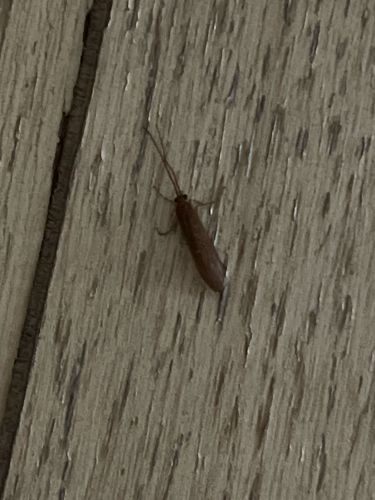Caddisfly
Scientific Name: Trichoptera (order)
Order & Family: Order: Trichoptera
Size: Adults can range from 2 mm to 40 mm (0.08 to 1.6 inches) in length, depending on the species.

Natural Habitat
Adult caddisflies are typically found near freshwater bodies (lakes, ponds, rivers, streams) where their larvae develop. They prefer areas with good water quality. Larvae are aquatic.
Diet & Feeding
Adult caddisflies generally do not feed or feed on liquids such as nectar. Caddisfly larvae (aquatic stage) have diverse diets, including detritus, algae, diatoms, decaying plant matter, and some carnivorous species prey on other aquatic insects.
Behavior Patterns
Adult caddisflies are often nocturnal and are attracted to lights. They are weak fliers compared to moths. The most notable behavior is that of the larvae, which construct cases from silk and various materials like sand, pebbles, or plant fragments, which they carry around for protection. Some larvae build fixed retreats or silken nets to filter food from the water.
Risks & Benefits
Caddisflies pose no direct risks to humans; they do not bite or sting and are not pests. They are ecologically beneficial. Larval caddisflies are important indicators of water quality (many species require clean water). They are a significant food source for fish (e.g., trout) and other aquatic animals, playing a crucial role in freshwater ecosystems. Anglers often mimic caddisfly larvae and adults with artificial flies.
Identified on: 9/22/2025